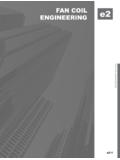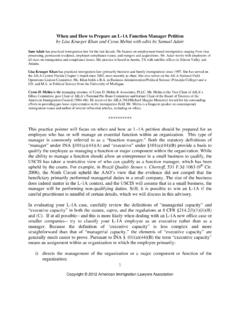Transcription of Quantifying and characterizing proanthocyanidins in ...
1 Anal Bioanal Chem DOI REVIEW. Quantifying and characterizing proanthocyanidins in cranberries in relation to urinary tract health Christian G. krueger & Jess D. Reed &. Rodrigo P. Feliciano & Amy B. Howell Received: 19 October 2012 / Revised: 12 December 2012 / Accepted: 15 January 2013. # Springer-Verlag Berlin Heidelberg 2013. Abstract The A-type proanthocyanidins in cranberry liquid chromatography, production of c-PAC standards, and fruit (Vaccinium macrocarpon Ait.) are bioactive compo- improved simple quantitative techniques. nents associated with prevention of urinary tract infections (UTI).
2 Cranberry juice, fruit (fresh and dried), functional Keywords Cranberry . DMAC . Mass spectrometry . foods, and cranberry dietary supplements are promoted for Urinary tract health . proanthocyanidins prevention of UTI and for maintenance of urinary tract health (UTH), on the basis of their content of cranberry proanthocyanidins (c-PAC) with A-type interflavan Introduction bonds. With increasing consumer use of cranberries for maintenance of UTH and an expanding number of commer- Urinary tract infections (UTI), regarded as among the most cial cranberry products of different types, the availability of pervasive of bacterial infections, are a large economic and unified methods for measuring levels of c-PAC is important.
3 Medical burden worldwide. In the United States alone, they This review discusses quantitative and qualitative analysis account for over seven million outpatient hospital visits and of c-PAC with A-type interflavan bonds in relation to their one million emergency room visits, with an annual direct biological activity for UTI prevention. The integrity (includ- cost greater than $2 billion [1]. Cranberry (Vaccinium mac- ing authenticity, standardization, efficacy, and safety) of rocarpon Ait.) fruit has been used for many years for pre- cranberry fruit, juices, and dietary supplements may now vention of UTI and for promotion of urinary tract health be measured by using recent advances in mass spectrometry, (UTH).
4 Originally, the ameliorating effect was believed to be because of the acidity of the fruit, but in the last 20 years, Published in the topical collection Functional Foods and Dietary research has focused on the effect of cranberry proantho- Supplements with guest editors Melissa M. Phillips and Catherine A. Rimmer. cyanidins (c-PAC) or condensed tannins which are oligomers and polymers of monomeric flavan-3-ols, for C. G. krueger : J. D. Reed : A. B. Howell Complete Phytochemical Solutions, LLC, 317 South Street, example catechin and epicatechin. There are two common Cambridge, WI 52523, USA series of procyanidin dimers.
5 The B-type series are dimers linked either in the C4 C6 or C4 C8 position whereas the C. G. krueger (*) : J. D. Reed A-type series are dimers linked in the C4 C8 position Reed Research Group, Dept. Animal Sciences, University of Wisconsin-Madison, 1675 Observatory Drive, with an additional C2 O C7 ether linkage (Fig. 1). c-PAC. Madison, WI 53706, USA oligomers with a DP>2 may incorporate both A-type and e-mail: B-type interflavan linkages. By extension of this defini- tion, and for purposes of discussion, c-PAC oligomers that R. P. Feliciano Dept. of Food Science, University of Wisconsin-Madison, 1605.
6 Contain one or more A-type interflavan linkages in their Linden Drive, structure are referred to as A-type c-PAC whereas c-PAC. Madison, WI 53706, USA oligomers that contain only B-type interflavan linkages are referred to as B-type c-PAC. In-vitro studies have A. B. Howell Marucci Center for Blueberry Cranberry Research, revealed that c-PAC, specifically those that contain A-type . Rutgers University, 125A Lake Oswego Rd, interflavan bonds [2], inhibit the adhesion of P-fimbriated Chatsworth, NJ 08019, USA uropathogenic Escherichia coli (E. coli) to uroepithelial cells krueger et al.
7 Evidence from a meta-analysis of clinical studies indi- cates that cranberry juice and dietary supplements reduce the number of symptomatic UTI over a 12-month period for women with recurrent UTI [26]. However, the usefulness of these clinical studies is limited because they used different doses and products, lacked compositional analysis of puta- tive bioactive components, and lacked mechanistic guidance for selection of subjects and study design. Although it is now widely accepted that c-PAC are the putative bioactive component, research shows that there are substantial differ- ences among products in c-PAC content and structural hetero- geneity, including number of A-type linkages, which affect their bioactivity [27].
8 Cranberry fruit is typically made into 27 % juice drinks containing 36 mg PAC and dosed daily at 300 mL for recurrent UTI prevention, although consumption of cranberry encapsulated powder has become a popular al- Fig. 1 Representative structure of a c-PAC dimer linked to an antho- ternative to juice. Accurate determination of the amount of cyanin through an ethyl group. Variation in degree of polymerization, position, and number of A-type versus B-type interflavan bonds and PAC in cranberry products is required to ensure correct con- substitutions with anthocyanins leads to large structural heterogeneity sumer product labeling, efficacy monitoring, shelf-life deter- among c-PAC oligomers [69] mination, and formulation of standardized materials for research studies.
9 This review discusses quantitative and qual- itative analysis of c-PAC with A-type interflavan bonds in [3 5], which is the first step in the infection process [6]. If relation to their biological activity for UTI prevention. bacteria are unable to bind to the bladder wall, they will not grow and progress to a UTI. This mechanism does not kill bacteria, so there is less chance of selection for resistant Quantitative analysis of cranberry proanthocyanidins bacterial strains. c-PAC inhibit adherence of multi-drug- resistant E. coli strains to uroepithelial cells by up to 70 % 4-(Dimethylamino)cinnamaldehyde (DMAC).
10 [7]. Foods that contain only proanthocyanidins (PAC) with B-type interflavan bonds, for example chocolate and grapes Rapid analytical methods to determine the concentration of do not seem to be effective in preventing UTI [2]. c-PAC are essential to research on the integrity of cranberry Researchers are currently examining the hypothesis that products. In this regard, the 4-(dimethylamino)cinnamalde- the urinary anti-adhesion effect may result from an innate hyde (DMAC) method has great potential as a rapid analyt- immune response in the urinary tract that is induced by ical method [28].







